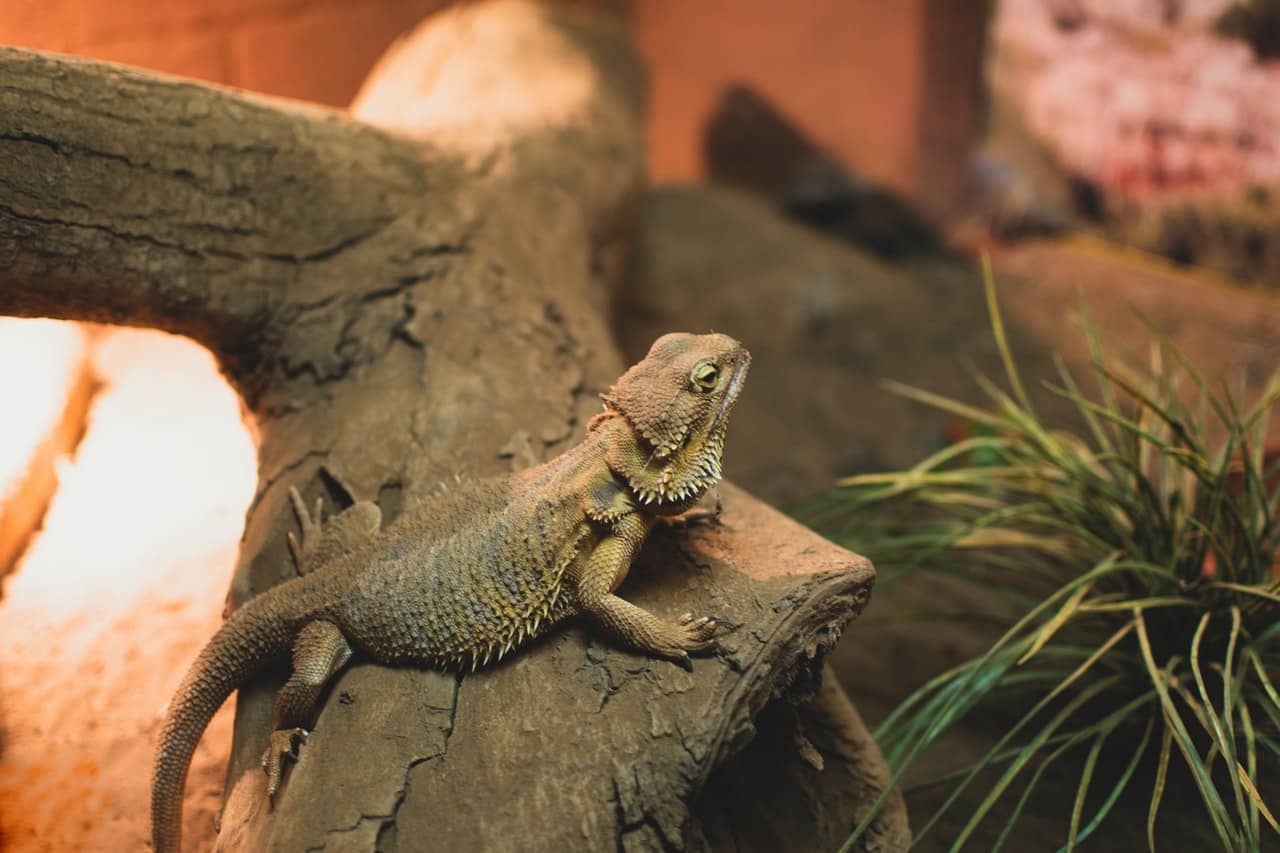Have you been thinking about taking care of a snake or lizard lately? Well, you’re not alone. 50 percent of all pets in the US right now are considered exotic, according to the Ecological Society of America. In recent years, there seems to be an increasing desire to raise quirky or unorthodox animal companions, and reptiles have turned out to be a crowd favorite. Fortunately, many such exotic pets can be easy to take care of and not harmful at all if you know what you’re doing. If you’re in the market for your first ever reptile pet, take a look at these beginner-friendly examples.
The Spry Bearded Dragon
A classic among reptile enthusiasts, bearded dragons are easygoing and gentle lizards, which makes them easy to handle if you’ve never had a reptile as a pet before. They can be a little pricey to raise, as they usually grow up to 2 feet long and thus need upwards of a 40-gallon tank to live comfortably. It’s also essential to provide them with a UVB light and a heat lamp. You need to provide both, or else the lizard may be stunted, or worse, develop the bone disease. The upside to their maintenance costs is that they can live for well over a decade and aren’t picky when it comes to food. They can eat insects, small vertebrates, fruits, and vegetables. You will need to give them a balanced diet, however. The ideal mix is 1 piece of meat for every 3 pieces of fruit or veggies. It would also be best if you add calcium powder to their vegetables to help their bones grow.
Beardies, as they’re often affectionately called, usually make their homes in dry places, such as savannas and deserts. So it’s best to give them 12 hours each of daylight and nighttime. You can simulate this by setting your reptile lamps on a timer. Bearded dragons can be quite skittish and hyperactive when they’re younger. When they’re hatchlings, their instincts tell them to be confrontational about everything. But with proper handling, they’ll soon grow out of any problematic behavior. What results from this is an energetic, curious reptile that loves to run around and examine its environment. Given this fact, it’s often to give them a bigger tank if you can afford it, as they love the extra room. These lizards can adapt to most terrarium bedding substrates, except play sand and calcium sand. But many reptile experts find that bark substrate works best for beardies.
The Compact Crested Gecko
Crested geckos are increasingly becoming a favored alternative to bearded dragons because of their more compact and low-maintenance nature. Unlike beardies, crested geckos usually only grow to about eight inches long, and are hence satisfied with much smaller-scale living arrangements. Smaller tanks benefit them as well, as “cresties” love to climb as soon as they are able, and as babies, they might end up falling off of a larger tank’s walls and hurting themselves. A more compact space also saves you money on a reptile humidifier. Since cresties come from a tropical island, they’re used to a certain level of humidity, so a humidifier is essential. But since they only need small tanks, you can get away with purchasing a cheaper, lower-power humidifier.
One fantastic advantage to raising crested geckos is that they’re remarkably easy to breed, which makes them appealing for aspiring reptile owners who feel drawn to the breeding aspect of things. They are also easier to feed. You can just buy something called Crested Gecko Diet or CGD Powder to serve as their main source of nutrition. However, it’s a common misconception that they can live on this powder all of their lives. It’s often best to mix in some feeder insects with the CGD powder, as well as some calcium powder to aid bone growth. As for temperament, these small creatures are more exploratory than anything else, passing the time by climbing things just like in their home island of New Caledonia. They’re most active at night, however, and usually relax or hide away in the day. They’re known to live for up to 20 years.
The Dynamic King Snake
King snakes offer a great balance between maintenance and enjoyment, and this makes them fantastic beginner snakes. They can grow to lengths greater than five feet, but weigh only three pounds on average. Still, their length requires you to get a roomier enclosure for them. This may put off some who are looking for a smaller, lower-impact pet. But the main appeal of kingsnakes is that they’re a joy to watch when they’re exploring their environment by burrowing in the terrarium bedding or climbing up on a branch. They are also fantastic swimmers.
These snakes rarely refuse their food, and will happily eat up frozen mice for every meal. The main concern you will have with them, aside from their size, is their great love of climbing. They’ll keep going higher until something stops them, so be sure to invest in snake clamps. Alternatively, you can just place a weight on top of your terrarium lid, although they have been reported to be able to defeat these makeshift measures. Given their athletic propensities, it may be best to get advice from reptile specialists or consultants to design the perfect enclosure that facilitates a king snake’s lively behavior.
The Mellow Children’s Python
Children’s pythons are small relative to other snakes, but this makes them perfect for new snake owners who want a smaller and easier to manage specimen. They only grow up to 2.5 feet on average, and usually, weigh around three pounds. This species is fairly common, with most snake dealers carrying at least a couple of specimens. They can survive just fine in a 10-gallon terrarium, but a 15-gallon one is best. Children’s pythons’ natural diet consists of frogs and lizards, but they can get used to eating feeder mice just fine. They’re not difficult to feed and breed, and they can even live up to 30 years.
Baby Children’s pythons, much like other young reptiles, can be aggressive and snap at you if you spook them. But they usually grow calmer and more comfortable around you as they get older, without needing much intervention. Once they’re fully mature, you end up with a very chilled-out, low-maintenance scaled friend who can easily give you a lifetime’s worth of companionship.
The reptile class of the animal kingdom is vast and contains many species that are safe to keep as pets. But before you delve into the complexities of truly exotic species, these beginner breeds will let you get the hang of caring for reptiles.



